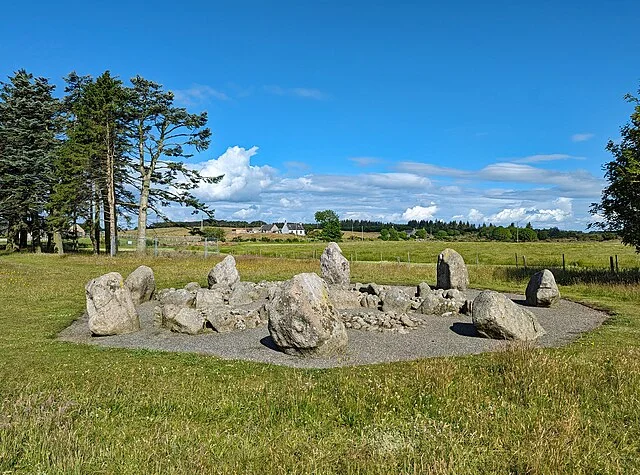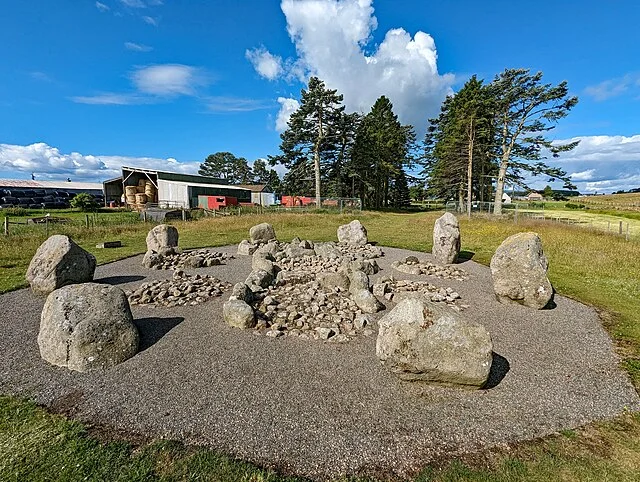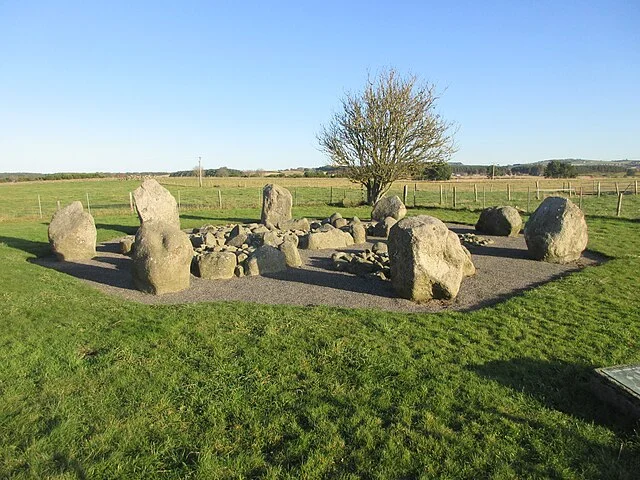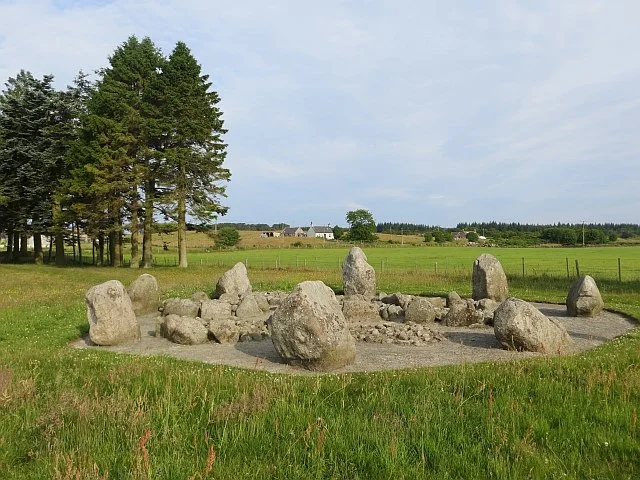Cullerlie Stone Circle is an ancient monument located in Aberdeenshire, Scotland. It is part of a broader group of recumbent stone circles, common in the region. These types of stone circles are characterized by the presence of a large stone set horizontally, known as the recumbent, along with other upright stones surrounding it. Cullerlie is thought to date back to the late Neolithic period, around 3000 to 2500 BC.
Get your dose of History via Email
Structure and Features

The Cullerlie Stone Circle consists of eight standing stones that form a circle with a diameter of approximately 10 meters. The stones are relatively small, each measuring between 1 and 1.5 meters in height. Inside the circle, there are small cairns or mounds, which contain cremation deposits. This internal arrangement is a distinctive feature, as many other stone circles do not have such burial-related elements.
The recumbent stone, which lies between two upright stones, likely served a ritual purpose. It is believed that the alignment of the recumbent stone with celestial events, such as the lunar or solar cycles, played an important role in ceremonies conducted at the site.
Purpose and Function

Cullerlie Stone Circle was likely a site for ritual activities, particularly related to burial practices and astronomical observations. The cremation remains found in the small cairns suggest that the site had a funerary role. However, its precise function remains debated among archaeologists, as with many other prehistoric stone circles.
One theory suggests that the circle’s alignment with the lunar cycle points to its use as a calendrical tool. Others propose that it was primarily a ceremonial site for the community, where significant events such as seasonal changes were marked. Despite these theories, the lack of definitive evidence means that much about the stone circle’s purpose remains speculative.
Archaeological Excavations

Cullerlie Stone Circle has been the subject of several archaeological investigations. In the 1930s, archaeologists uncovered evidence of cremation activity within the cairns, strengthening the idea that the circle was used for burial purposes. Subsequent excavations have focused on dating the site and understanding its broader connection with other recumbent stone circles in Aberdeenshire. The findings from these excavations indicate that Cullerlie was part of a complex prehistoric landscape where ritual, burial, and perhaps even astronomical activities were closely intertwined.
Comparisons with Other Stone Circles

Cullerlie Stone Circle shares many similarities with other recumbent stone circles in northeastern Scotland. These circles tend to have a similar layout, with a recumbent stone flanked by two upright stones and a surrounding ring of standing stones. Like Cullerlie, many also have evidence of cremation and burial activities.
However, Cullerlie is unique due to the small size of its stones and the arrangement of cairns within the circle. While other circles are often larger and more imposing, Cullerlie’s modest scale suggests that it may have served a more localized or specialized role compared to other stone circles in the region.
Conclusion
Cullerlie Stone Circle is an important archaeological site that offers insight into the practices and beliefs of the late Neolithic inhabitants of northeastern Scotland. Its unique combination of burial cairns, standing stones, and astronomical alignments indicates that it played a multifaceted role in the lives of those who built it. While much remains unknown about its exact purpose, ongoing research continues to shed light on this intriguing monument, connecting it to the broader prehistoric landscape of Aberdeenshire.
Source:

